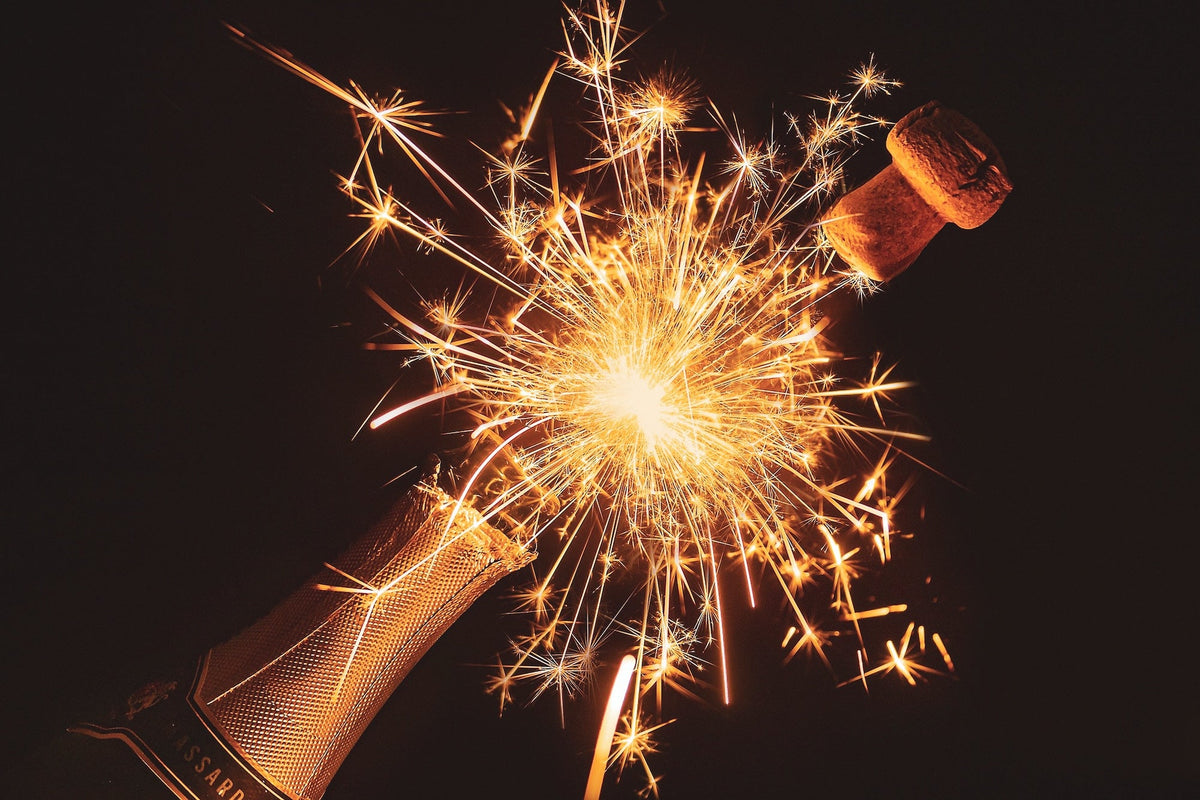
Unwrapping Sparkling Wine This Holiday Season
|
|
Time to read 3 min
|
|
Time to read 3 min
We don’t need an excuse to indulge in a good glass of Sparkling Wine, but if there were one it would be the Holiday Season. Whether you're celebrating with friends, family, or by yourself, the festive season demands bubbles. But with so many types out there, it's easy to get confused. In this guide, we will cover everything you need to know about sparkling wine, from its origin to the best regions for sparkling wine. So sit back, relax, and sip on your favourite glass of bubbly as we explore the world of sparkling wine.
Champagne originates from the Champagne region in France. It undergoes a second fermentation inside the bottle, which creates bubbles and imparts distinct flavours of brioche and almond pastry. Prosecco is from the Veneto region of Italy and is made with the Glera grape variety. Unlike Champagne, Prosecco undergoes a second fermentation outside the bottle, which produces a softer and less persistent effervescence with more fruity characters. Cava comes from Spain and is typically made with Macabeo, Parellada, and Xarel-lo grape varieties. It follows a similar production method as Champagne, with a second fermentation inside the bottle. Sparkling wine can come from anywhere worldwide and be made using any grape variety. It is typically less expensive than Champagne and Prosecco and can be produced using various methods, including tank and bottle fermentation.
The first recorded sparkling wine was produced by a Benedictine monk named Dom Pierre Pérignon in the Champagne region of France. Although popular myth has it that he exclaimed, "Come quickly, I am tasting the stars!" upon discovering the bubbles, there's no evidence to support this. Pérignon did, however, play a significant role in perfecting the technique of second fermentation in the bottle, which is still used today.
Australia has a reputation for producing some of the finest sparkling wines in the world. The regions of Tasmania, Yarra Valley, King Valley and Adelaide Hills are particularly well-known for their sparkling wines. Tasmania, in particular, has a cool and mild climate, allowing for a longer ripening season and producing grapes with a concentrated flavour for sparkling. The region is also known for its specific production method, blending Pinot Noir and Chardonnay grapes.
White sparkling wine typically uses Chardonnay grapes, fermented without skin contact to maintain light in colour. On the other hand, red sparkling wine is made from red grapes and undergoes skin contact fermentation to produce a deeper colour. Some well-known red sparkling wines include Italian Lambrusco and Australian sparkling Shiraz. Rosè sparkling wine can be made using either white or red grapes, but it undergoes skin contact fermentation to give it a pink colour. The sweetness level of sparkling wine can vary from the bone-dry style of Champagne to the sweet and fruity Moscato d'Asti.
Low-alcoholic sparkling wine is typically made using a vacuum distillation process or by stopping the fermentation process early. The resulting wine has an alcohol content of less than 10% (usually around 5%). It is a good option for those looking to limit their alcohol intake. The taste of low-alcoholic sparkling wine can vary, with some brands producing wines that taste similar to traditional sparkling wines. If you are exploring low-alcohol options, we suggest trying these.
Zero-alcoholic sparkling wine is made using various methods, including vacuum distillation, reverse osmosis, or the early cessation of fermentation. The resulting wine has an alcohol content of less than 0.5% and is an excellent option for those looking to enjoy a glass of bubbly without the after-effects of alcohol. Zero-alcoholic sparkling wine has gained popularity recently and is now widely available in Australia. If you are exploring zero-alcohol options, we suggest trying these.
Sparkling wine is an excellent choice whether you're celebrating or looking for something refreshing to sip this summer. From Champagne to Prosecco, Cava, and Sparkling Wine, various options suit every palate. Australia has some of the best sparkling wine regions, with Tasmania, Yarra Valley, and Adelaide Hills leading the way. Exploring the world of sparkling wine can be an exciting and rewarding experience, and we hope this guide has provided you with everything you need to know to make an informed decision about your next bottle of bubbly. Cheers to a fantastic holiday season!
